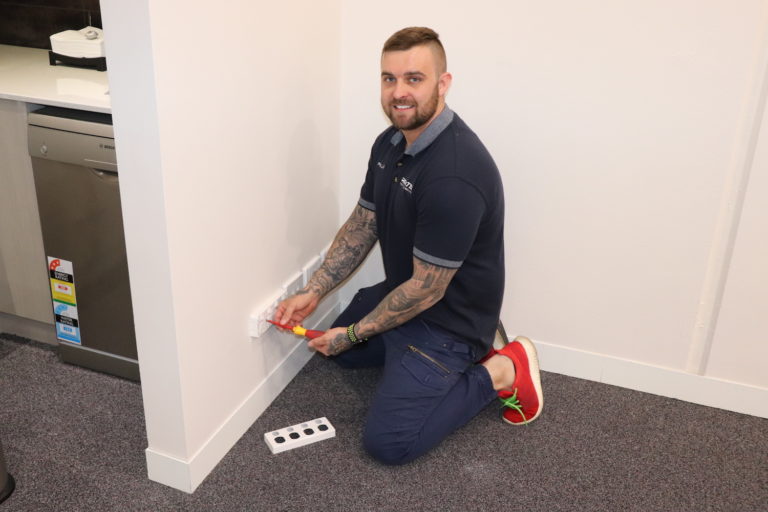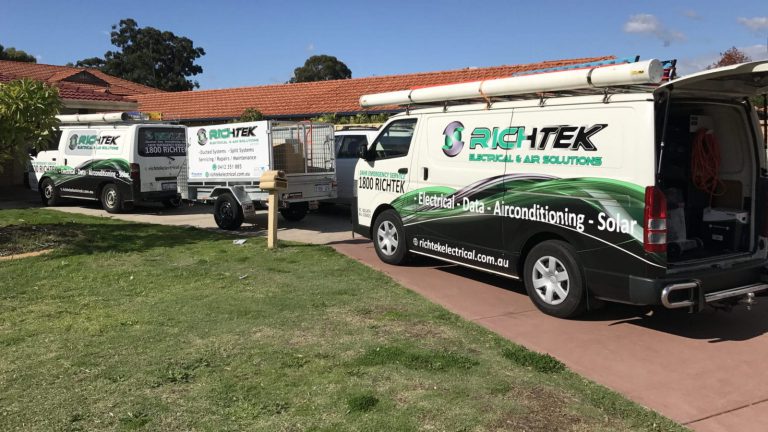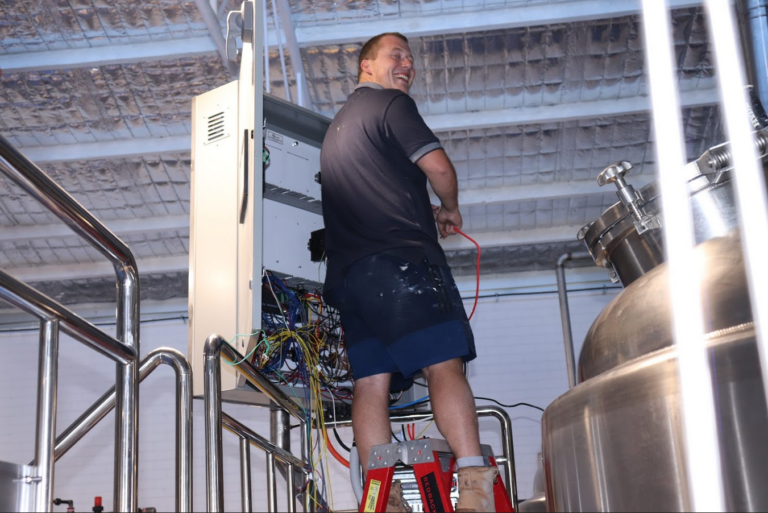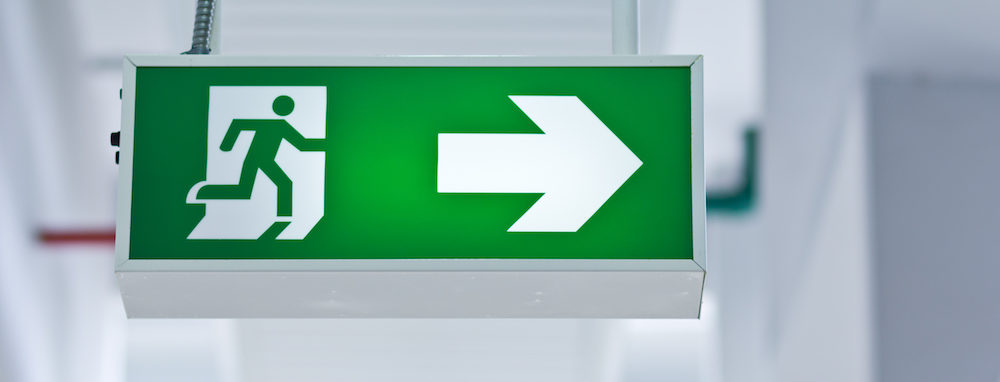Without electricity, modern life comes to a grinding halt. When the power goes out, you can’t light, heat or cool your house properly. Many people can’t even prepare a simple meal without power. With lines of communication down and even the TV dead, everything seems in meltdown. So much of our day-to-day is dependent upon electricity, and when the power fades it can bring about a huge headache. There’s a big difference between a storm tripping a breaker and a potentially dangerous electrical accident at home, though. You can’t completely avoid the storm, but there are plenty of sensible precautions you can take to prevent electrical accidents. Today, we’ve got 7 simple tips showing you how to avoid electrical accidents at home.
1) Never Overload Your Sockets
Perhaps the easiest rule to follow, and unfortunately one of the most frequently ignored, is that you should never load your sockets with too many appliances. Using extension cords is fine, provided you use one with protective safety features. Some extension cables have a special fuse that will shut off the power if the fuse becomes overloaded. Also, pay attention to how the cord is rated. If it’s only rated for indoor use, don’t use it outside because it won’t cope with exposure to the elements. If you find yourself continually using extension cords in a specific part of your home, consider hiring a licensed electrician to install additional sockets in this spot instead. When plugging things into your sockets, use only one plug per socket. We understand that many homes simply don’t have enough outlets and that dual plugs can extend the usefulness of specific outlets. However, you can’t safely attach several dual plugs in each socket and then run extension cords from these. Doing this is just asking for trouble.
2) Safety Of Your Sockets
Being aware of socket safety is another important rule of thumb when it comes to electrical hazards. To avoid any electrical accidents at home, there are a few things you can do differently. When you are tempted to jerk the cord out of the wall instead of walking over and unplugging it gently, think again. This jerking motion can be dangerous and is highly likely to cause damage to the outlet, the plug or the appliance the cord is attached to. If you’ve got small children at home, you need to be especially aware of your sockets and if they pose any threats. Children are curious, and many a child has come to grief when exploring sockets. To prevent your youngster from being burned, zapped, or electrocuted, you need to purchase safety caps for your outlets and place them on any that are not in use.
3) Maintain Your Sockets
Just like everything else in your home, your electrical sockets need proper maintenance. Set a schedule to regularly examine the appearance of your electrical areas. Look at the sockets, the plugs and the cords to check for any defects. In your cords, you do not want to see any exposed wiring and if there are any twists or kinks you need to undo them sharpish. Pay attention to any other flaws you notice. Check for plugs that are bent out of shape and fix them. If there are any indications of burning on the plugs, you need to call a licensed electrician. As for your sockets, check to make sure they are not loose from the wall and that there are no burn marks around them at all. If either of these issues is a problem in your home, call a licensedelectrician to fix it properly.
4) Exposed Wires
As mentioned above, you want to be sure there are no visible wires in your appliance cords. If you can see through the coating down to bare electrical wires in places, this is highly dangerous and needs to be handled immediately. You should also avoid hiding cords. Yes, the cord might be unsightly running across the rug and it might be a trip hazard but this is a whole lot better than a house fire. When cords are hidden under rugs or behind furniture, you can’t see them or the condition they’re in. You won’t be able to tell if they’ve overheated or frayed so make sure they remain in plain sight. If you plug something into an outlet, do not push furniture in front of this spot. Doing so could cause the cord to bend. A cord that remains bent could easily start arcing electricity. With furniture in close proximity, this could quickly start a dangerous fire. You must do all you can to maintain visible wires and cords in your home, even if they look like an eyesore. Electricity creates heat and cords need to be able to stay as cool as possible. When cords are covered up, they are unable to properly cool down which can result in overheating leading to electrical accidents at home.
5) Keep Liquids Away
Everyone knows liquids and electricity do not mix well together. Not only can the water suck any life from your electrical appliances if they come into contact, but the shock of electricity and water can give you quite a zap, perhaps even fatally. You must be extremely vigilant when it comes to electricity and liquids. You should do everything you can to keep electrical cords, plugs and appliances away from any liquids. There are many electrical appliances habitually used in rooms prone to getting wet, like the kitchen or the bathroom. When using your electric hair tools or small cooking appliances, you need to make certain you keep them away from liquids. Be sure you’ve got dry hands when you’re handling these tools and appliances as well. If your cord or plug are wet, allow them to fully dry before using the appliance attached to them. Make sure you’re not standing in water while drying your hair or filling your electric kettle, and do not use anything electronic while you’re in the tub or shower. If your plugged-in appliance does somehow get wet, do not try to unplug it from the socket. Instead, go to the electrical box in your home and find what controls the power in the room where the wet plug is and shut it off.
6) Power Off Your Appliances
Another thing you can do to prevent electrical accidents at home is to turn all appliances off when they are not being used. When your appliances and cords are plugged in, electricity is flowing through them. It can be easy to get zapped by these things if they are not turned off. When you’re finished up with any electrical appliance, get into the habit of unplugging it or turn off the appliances at the switch. Once your water is boiled, unplug the kettle. When your mobile phone is charged and no longer needs to be plugged in, unplug it. Turning off appliances is especially important when it comes to anything that generates heat. You don’t necessarily need to heat vacant rooms so when you leave a room, unplug or turn off the heater.
When you’re getting ready to leave home for the day, go through and make sure your appliances are all unplugged and your lights are turned off at the switch. Doing this can not only help to prevent electrical accidents, it can also help to lower your electricity bill since fewer things will be drawing power when not in use.
7) Keep Wires Cool
Electricity generates heat, and this heat causes wires and cords to become hot. Over time this can weaken the protective layer that holds in the wiring and results in defects to the cords. It is vital that cords are allowed to remain as cool as possible so this doesn’t happen in a hurry. Wire heat can swiftly become problematic. Also, many electrical appliances are in use in the kitchen, and many of the most popular appliances are pretty small. Cords can easily get strung about and before you realize what’s happening there might be a cord melting where you were just making your morning muesli. To avoid this, pay attention to the position of cords and wires, and make sure they are not being exposed unnecessarily to heat. Also, when you are finished up with any appliance, allow it ample time to cool off before placing it back into its storage cupboard.
This is especially important when it comes to appliances like toasters that produce heat themselves. Not only will the wire heat cause problems, but hot appliances in closed-off cupboards can quickly become a fire hazard.
Final Word
There are many dangers lurking when it comes to electricity, but there are also plenty of steps you can take to help prevent electrical accidents at home. Think about these simple tips and you can remove potential hazards and make your home safer. If you have any questions or you’re in any way concerned electrics in your home, don’t hesitate to get in touch.















